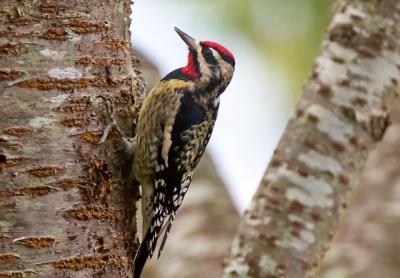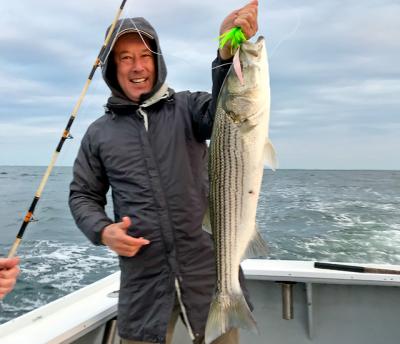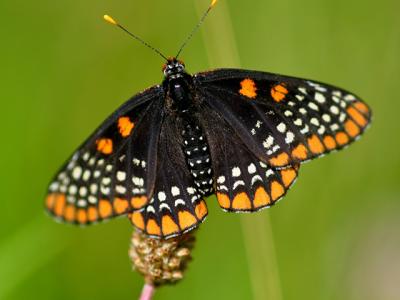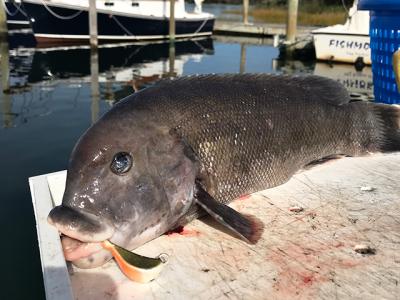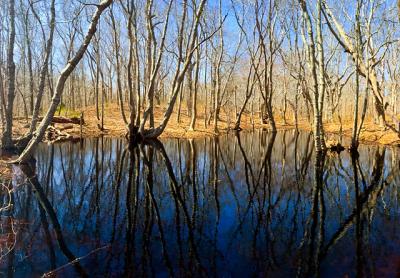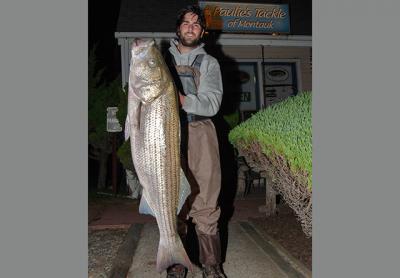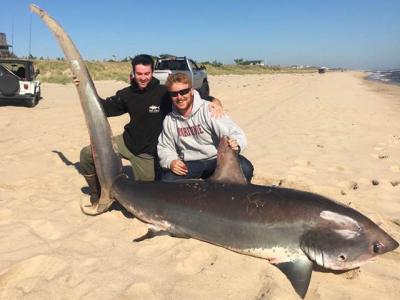Hurray for Haddock
Hurray for Haddock

Irony can be a bitter pill to swallow at times. A perfect example came about last week as my boat was pulled from the water for the season.
As luck or fate would have it, as soon as it was hauled out, the weather decided to turn nice. Like a simple light switch being turned off, the steady windy weather that’s been a constant over the past few months finally ceased. The calmness lasted for several days. The weather gods had finally listened, but sadly, at the wrong time for me.
Just about anyone you talk to around various docks, tackle shops, and marinas would agree that this fall season produced some of the windiest weather witnessed in many years. It rarely stopped blowing.
So, it hurt me a bit to see a few boats still plying the waters in front of my house for bay scallops, their owners enjoying the chilly yet docile, placid conditions. I was sad that I had not kept my boat in the water just a little bit longer.
But it was too late. Covered in a mass of shrunken white heavy plastic, my boat is now solidly entombed while resting on cement blocks on terra firma. And it will remain in its very solemn position until the end of March, when it will be unwrapped from its deep sleep.
I can’t complain, though. I put over 120 hours on my engine this year. By any account, she deserves some rest.
However, for those lucky enough to still have their boats in the drink, the fishing was productive during those rare calm days on everything from blackfish to porgies to codfish to black sea bass.
But the greatest surprise, by all accounts, has been a sudden, strong showing of haddock. A close cousin of codfish, haddock are usually found north of Cape Cod in colder waters. Nobody in our local environs directly targets them, as they are just not around.
Back in 1981, I caught one on a long-distance trip to Georges Bank in the pursuit of cod, and I heard a few were landed a few years ago at Cox’s Ledge, well to the east. That’s the limited extent of my personal background with this fish. Basically nothing.
But about a month ago, something changed. Commercial fishermen reported that a good number of the highly prized fish were being landed to the east of Block Island, and the catches have continued to build. Now, with the recent break in the winds, recreational anglers have picked up their fair share too.
“It’s a fishery that is totally abnormal for us,” said Capt. Jamie Quaresimo of the Miss Montauk II, a Montauk party boat, who normally focuses on sea bass and cod on his daylong trips this time of the year. “On Saturday’s trip, I think half the folks on the boat did not realize what they caught. We are hearing and seeing haddock catches covering over a span of 50 miles.”
Indeed, the fish have been spotted to the west of Montauk in the ocean off Shinnecock, Moriches, and even Captree.
“We are seeing something that has never been seen before in our waters,” he added. Quaresimo hopes the catches will continue and he plans to be on the search for haddock, along with cod and sea bass, as conditions allow. As recently as Monday, the Viking FiveStar even planned to fish exclusively for haddock, departing at 5 a.m. More such specialized trips may be scheduled in the future.
Why the fish are now here is anybody’s guess as is the question of how long they will hang around. But at least for now, both commercial and recreational fishermen will continue to enjoy this totally unexpected early holiday surprise.
“Blackfishing has been tremendous of late,” said Capt. Michael Potts of the charter boat Bluefin IV out of Montauk. “It’s been easy limits by 9 a.m. Cod and sea bass have been excellent, too.” Note that the blackfish season comes to a close on Dec. 22, around the same time Potts plans to haul his boat out for maintenance.
“Still a ton of small stripers on the ocean beaches,” exclaimed Harvey Bennett, the owner of the Tackle Shop in Amagansett. “Fishing for them has been pretty much nonstop.” Note that the striped bass season ends on Dec. 15. Bennett was also enthused about the fishing for largemouth bass in Fort Pond in Montauk. “Nightcrawlers and jitterbugs have been the hot ticket to catch them.”
Ever the competitor, Bennett has two fishing contests underway. The first is for the largest fresh or saltwater fish landed, the second for the largest striped bass taken on the final day of the season. Sam Doughty of Amagansett currently holds the lead for the largest fish, an eight-pound codfish, and is also in second for a seven-pound blackfish. Rick Spero of East Hampton has a grip on third place with a chunky six-pound largemouth bass.
The $20 tournament fee also enters contestants into a raffle to win a 10-foot surf rod, and pays for membership into the Amagansett Sportfishing Association. Proceeds will go to underprivileged children in the Dominican Republic, where Bennett has shipped off a steady supply of clothes, shoes, school supplies, and baseball equipment.
While the summer flounder season closed at the end of September for recreational anglers, commercial fishermen have still been allowed to retain fish, albeit on a small scale. Effective last Saturday, their daily trip limit was reduced to a mere 70 pounds, but will be increased to 210 pounds on Sunday. However, on Jan. 1, the limit goes down to a paltry 50 pounds. Not exactly a happy new year for some.
We welcome your fishing tips, observations, and photographs at [email protected]. You can find the “On the Water” column on Twitter at @ehstarfishing.

